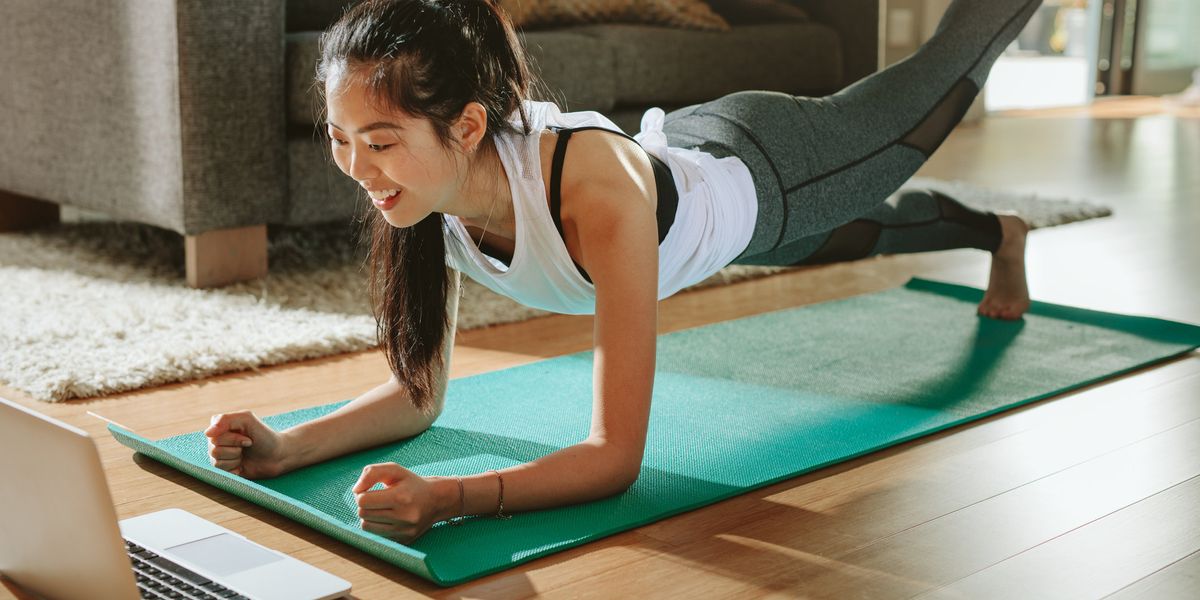How Do You Stay Performance-Ready When You're Stuck at Home?
Dancers are nothing if not disciplined. As soon as studios started shutting their doors, so many online classes began popping up that it became nearly impossible to keep track of them all.
But is kitchen-counter barre really the best way to prepare your body to jump back into intensives and performances once we stop social distancing?
To find out, Dance Magazine asked Joshua Honrado, MS, an athletic trainer at the Harkness Center for Dance Injuries at NYU Langone Orthopedic Hospital who provides backstage care to Broadway and elite dance companies.
First: Use the time to heal.
Unlike sports players, dancers don’t always have periodized seasons with weeks set aside to rest and recover. “This could actually be a nice time for dancers to heal from chronic injuries they might have sustained from dancing,” says Honrado.
If you struggle with nagging, long-term issues—and even at-home dance classes irritate them—Honrado recommends taking a week or two off from any dance techniques that cause pain. Instead, use the time to enjoy recreational activities and to do cross-training that builds your strength and stamina but doesn’t aggravate your problem spots.
About those online dance classes:
Unless you have a studio with a sprung floor at home, you’re going to be forced to limit your dancing right now. That’s okay—just make sure you’re making your environment as safe as possible.
“What I’m worried about is increased concussion rates, and dancers hitting objects around them,” says Honrado. Find as much open space as you can, and maintain an awareness of all the objects around you.
Don’t neglect your endurance.
You can maintain most of your strength through about four weeks of inactivity, and muscle memory brings it back fairly quickly, according to Honrado. But aerobic endurance decreases about twice as fast, and is harder to rebuild—particularly for dancers, since class and rehearsal typically stop and start too much to build stamina.
Of course, every body is different, and those with more robust baseline fitness won’t lose it as quickly. A professional dancer will likely be able to sustain and get it back faster than a pre-professional dancer.
Still, Honrado recommends prioritizing aerobic exercise. There are plenty of options: Look up aerobic programs online, jump rope (in parallel with good sneakers), climb stairs, run (with good form and shoes), go biking or do laps in a pool if you have access to one at home. For now, aim for 30 minutes three days a week. Once you’re two to three weeks out from returning to the studio, progressively increase that to 30 to 60 minutes four or five days per week.
Mental training can help, too.
Honrado suggests using imagery to mentally rehearse pieces you’ll need to perform soon after returning. If you have the music to your choreography, listen to it while visualizing yourself performing every step. The mind-body connection can be a surprisingly powerful tool to help you get performance-ready.
Focus on your weak spots—and what you’ll need when you’re back.
For jumps:
A plyometric program can increase the power of your jumps, and help you work on your stamina, says Honrado. Try these five plyo exercises from our sister publication Pointe. (Just make sure you’re wearing good sneakers.)
For partnering:
“There’s only so much you can do with push-ups,” admits Honrado. If you have weights or a medicine ball at home, practice upper-body exercises like lat raises and overhead squats while focusing on core alignment. You can also get creative and improvise your own equipment by stuffing a backpack with heavy text books or filling used juice bottles with water.
For arabesque:
Honrado suggests yoga to work on your spinal extension and range of motion.
For core strength:
If you often get corrections about pelvic placement or core stabilization, take Pilates classes on YouTube or Instagram Live.
For flexibility:
Save the stretching until after you’re warm from a workout or at-home dance class, says Honrado. To increase flexibility, he suggests holding positions for only 30 to 60 seconds, and repeating each side two to three times in order to avoid over-stretching, which could lead to injury.
When you go back to the studio:
Two to three weeks before your regular schedule resumes, Honrado suggests starting to be active for around the same number of hours that you’ll be dancing for in the studio, through a mix of class and cross-training.
Once you’re back, proper nutrition and hydration will be critical to make sure you’re fueled appropriately. But most importantly, you’ll need to listen to your body. “More likely than not, you’re not going to feel the same as you did when you left,” he warns. Hopefully teachers and artistic directors will allow dancers to ease back into their schedules gradually, knowing that their bodies will be de-conditioned from the weeks away from the studio.
As exciting as it might be to be back, and as eager as everyone might feel to make up for lost time, the number-one priority should still be to take care of your health.





